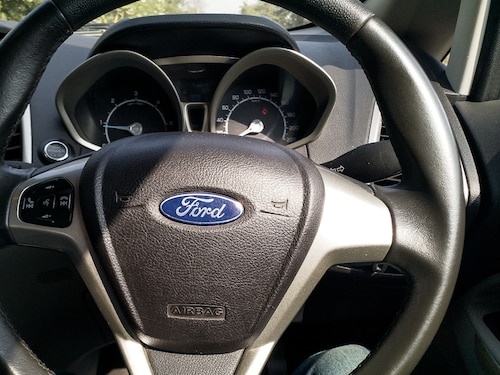Elephants cannot dance: A Tale of Two Fords
The automobile giant has reinvented itself to gain profits and maintain growth in the US, but it could not recreate that magic in India. Ford’s lumbering size and a stolid local connect ruined the par


The stylish Ford emblem, famously believed to be Henry Ford’s signature, embedded into the oval in blue and white beams with grace. The blue stands for trust, the white depicts the impeccable reputation that the brand enjoys. The oval represents a “hallmark for reliability”. Modernised with a silver lining on its 100th Anniversary in 2003, it is considered one of the most successful logos in the world. The iconic Blue Oval has effaced a century of ups and downs and stood with elegance over years of unprecedented performance, unflinching courage and an unparalleled legacy. Ford stands for dependability and endurance. For generations of B-school graduates, Ford became synonymous with management lexicon—assembly lines, division of labour, mass production and vertical integration. As a pioneer, Ford depicts the dawn of modern industrialisation. Henry Ford became the curator of the ‘democratise the automobile’ vision. The Lincoln Continental, SVT-Raptor, Thunderbird, F-100 and The Mustang remain insignias of corporate excellence. Ford’s Model T is said to have ushered in the automobile revolution. The car became the subject of songs and films. Built in 1908, Model T was conceived as a practical and affordable transport for the common man. More than 15 million Model Ts were sold.
An early Model T
The pandemic and an upheaval
When the pandemic struck, Ford found itself in a different playing field—manufacturing ventilators—a move that marked a historic redeployment of its resources and capabilities. What started primarily as a consequence of a global health crisis and less as a matter of choice, became Ford’s new business model. In October 2020, Ford announced leadership changes to turn around automotive operations and reconfigure its organisational design. Car manufacturing is typically a lengthy, drawn-out process. The new strategy ushered in a change of pace for Ford where speed was the essence. This was Ford’s ‘future of work’ moment. The structural revamp marked a stark deviation from the 20th-century monolithic hierarchical design, so characteristic of the Fordian textbook archetype. Teams were regrouped in a hybrid environment. Ford adopted a de-densification strategy, which required replacing designated work stations with flexible collaboration spaces. This was not just about layout reassembly, it predicated a behavioural and cultural shift. Ford’s hierarchy made way for a more agile structure. Ford’s story is a lesson in ‘phoenix rising from the ashes’. Faltering for years, Ford Motor started showing signs of revival. In the first quarter of 2021, the company reported $3. 3 billion in profit, the most it had made in a quarter in ten years. Its share price rallied, jumping more than 70 percent. In July, Ford boosted its 2021 profit forecast after reporting impressive results. Ford faces plenty of challenges, but there’s a lot more confidence now. The company is “spring-loaded for growth”.
First Published: Sep 15, 2021, 17:01
Subscribe Now